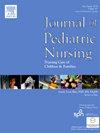Winning Poster: Insertion and maintenance of peripherally inserted central catheter for a pediatric epidermolysis bullosa patient: A case report
IF 2.3
4区 医学
Q2 NURSING
Journal of Pediatric Nursing-Nursing Care of Children & Families
Pub Date : 2025-09-01
DOI:10.1016/j.pedn.2025.06.036
引用次数: 0
Abstract
To discuss the challenges associated with insertion and maintenance of peripherally inserted central catheter (PICC) for a pediatric patient with Epidermolysis Bullosa (EB). Background - EB is an inherited disorder that affect the epithelial-lined tissue and causes the skin or mucous membrane to be extremely fragile and prone to blistering, tears, erosions, and ulceration from minor traction or trauma. Due to the extensive fragility of the EB skin, there are limited intact skin sites for PICC placement. In addition, securing an indwelling venous catheter is extremely challenging because all adhesives are avoided on the EB skin directly. As a result, PICCs in EB patients are prone to migration and dislodgement. Results - While caring for a 10-year-old patient with EB and 79 % affected total body surface area of skin blistering and wounding, we inserted the PICC into the proximal cephalic vein at the level of the axilla, sutured, and secured with adherent foam dressing. The suture broke and the PICC was migrated by 1 cm by day 3 of insertion. Medical-grade tissue adhesive was then introduced and applied to the insertion site and under the PICC wing to secure the PICC from further migration. After tissue adhesive was applied, the PICC remained intact for a total of 24 days and was removed on the day of discharge. There were no skin-related issues, such as blisters, skin breakdown, rash, or drainage after tissue adhesive application and during and after tissue adhesive removal. In addition, there were no signs or symptoms of infection, phlebitis, thrombosis, or other complications related to the catheter. Conclusions - Disparities and gaps in knowledge exist in vascular access for EB patients. This case report demonstrates an unconventional PICC insertion site and the use of tissue adhesive to minimize PICC catheter malposition in a pediatric patient with EB.
获奖海报:儿童大疱性表皮松解症患者外周插入中心导管的插入和维持:1例报告
探讨大疱性表皮松解症(EB)患儿外周插入中心导管(PICC)的插入和维持所面临的挑战。背景- EB是一种遗传性疾病,影响上皮组织,导致皮肤或粘膜非常脆弱,容易因轻微的牵引或创伤而起泡、撕裂、糜烂和溃疡。由于EB皮肤的广泛脆弱性,用于PICC植入的完整皮肤部位有限。此外,固定留置静脉导管是极具挑战性的,因为所有粘接剂都避免直接在EB皮肤上。因此,EB患者的PICCs容易迁移和移位。结果:在治疗一名10岁的EB患者时,我们将PICC插入腋窝水平的头近端静脉,缝合,并用黏附泡沫敷料固定,患者全身皮肤起泡和受伤面积为79% %。缝线断裂,PICC在插入第3天移动了1 cm。然后引入医用级组织粘合剂并将其应用于插入部位和PICC翼下,以确保PICC不会进一步移动。应用组织粘接剂后,PICC保持完整共24 天,并在出院当天取出。没有皮肤相关的问题,如水疱,皮肤破裂,皮疹,或在组织粘合剂应用后,期间和之后组织粘合剂去除。此外,没有感染、静脉炎、血栓形成或其他与导管相关的并发症的体征或症状。结论:EB患者血管通路知识存在差异和空白。本病例报告展示了一种非传统的PICC插入部位,并使用组织粘接剂来减少小儿EB患者PICC导管的错位。
本文章由计算机程序翻译,如有差异,请以英文原文为准。
求助全文
约1分钟内获得全文
求助全文
来源期刊

Journal of Pediatric Nursing-Nursing Care of Children & Families
NURSING-PEDIATRICS
CiteScore
3.70
自引率
8.30%
发文量
291
审稿时长
65 days
期刊介绍:
Official Journal of the Society of Pediatric Nurses and the Pediatric Endocrinology Nursing Society (PENS)
The Journal of Pediatric Nursing: Nursing Care of Children and Families (JPN) is interested in publishing evidence-based practice, quality improvement, theory, and research papers on a variety of topics from US and international authors. JPN is the official journal of the Society of Pediatric Nurses and the Pediatric Endocrinology Nursing Society. Cecily L. Betz, PhD, RN, FAAN is the Founder and Editor in Chief.
Journal content covers the life span from birth to adolescence. Submissions should be pertinent to the nursing care needs of healthy and ill infants, children, and adolescents, addressing their biopsychosocial needs. JPN also features the following regular columns for which authors may submit brief papers: Hot Topics and Technology.
 求助内容:
求助内容: 应助结果提醒方式:
应助结果提醒方式:


